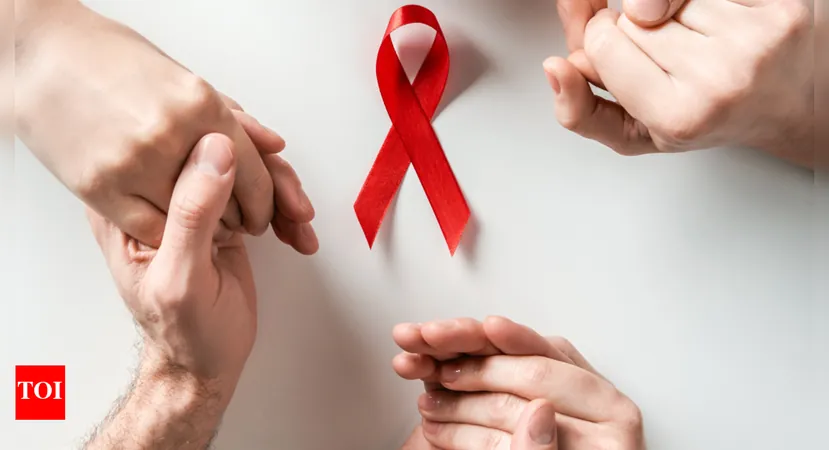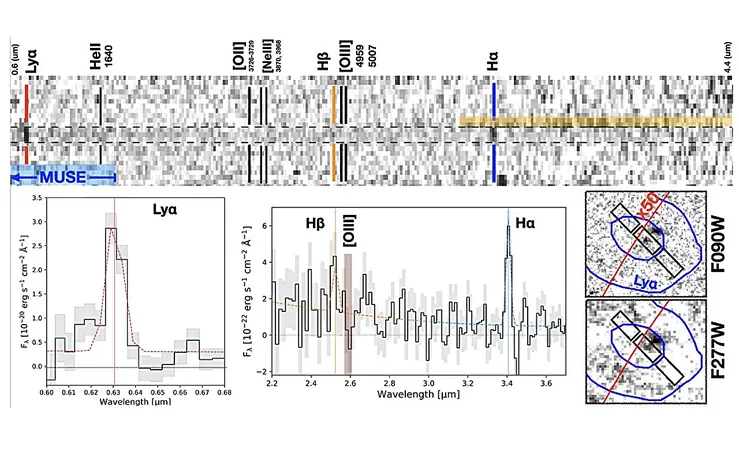
HIV Breakthrough: Revolutionary Antibodies Offer New Hope for Treatment
2025-09-14
Author: Daniel
Game-Changing Discovery in HIV Research
The battlefield against HIV-1, the virus responsible for AIDS, is witnessing a remarkable breakthrough with the discovery of broadly neutralizing antibodies (bNAbs). These potent antibodies, first identified in 1994 with the groundbreaking b12, have opened new avenues in the fight against this devastating virus.
The Magic of Antibodies: What Makes bNAbs Special?
Unlike standard antibodies, which target specific strains, bNAbs possess the unique capability to neutralize a diverse array of HIV variants. They are at the forefront of vaccine development and potential therapeutic strategies, providing a glimmer of hope for millions affected by this virus.
b12: The Pioneer Antibody
In a pivotal 1994 study published in Science, researchers isolated b12 from an HIV-positive patient. This antibody displayed an unprecedented ability to neutralize HIV, outperforming pooled plasma—which harbored billions of diverse antibodies—by achieving effective neutralization in 8 out of 12 patient samples, while pooled plasma succeeded in only 3. b12 targets a challenging region on the HIV envelope protein, gp120, notorious for its high mutation rate and protective glycan shield. By binding to this critical area, b12 can effectively prevent the virus from infiltrating human immune cells.
An Exciting New Era: Isolating More Powerful Antibodies
Following the discovery of b12, researchers intensified efforts to identify additional bNAbs, finding several remarkable antibodies from 'elite neutralizers'—individuals living with HIV for many years who naturally developed these potent defenses. Notable bNAbs like VRC01, PG9, PG16, and 3BNC117 target vulnerable sites on the HIV envelope and have shown immense promise in clinical trials, reducing viral loads and delaying rebound after treatment cessation.
The Global Impact and Future Perspectives
The emergence of bNAbs represents a transformative leap towards controlling HIV on a global scale. Current research aims to decode why these antibodies appear in some individuals, with the ultimate goal of designing vaccines that can elicit similar immune responses in healthy populations. In India, for instance, scientists have discovered bNAbs that particularly target the V3 glycan of the local HIV strains, proving to be the most effective against the virus, while others showed lower effectiveness.
As the scientific community pushes forward in its quest for an effective HIV vaccine and durable treatments, the remarkable work surrounding bNAbs, especially the pioneering b12, remains central to understanding HIV and the dream of an HIV-free future.


 Brasil (PT)
Brasil (PT)
 Canada (EN)
Canada (EN)
 Chile (ES)
Chile (ES)
 Česko (CS)
Česko (CS)
 대한민국 (KO)
대한민국 (KO)
 España (ES)
España (ES)
 France (FR)
France (FR)
 Hong Kong (EN)
Hong Kong (EN)
 Italia (IT)
Italia (IT)
 日本 (JA)
日本 (JA)
 Magyarország (HU)
Magyarország (HU)
 Norge (NO)
Norge (NO)
 Polska (PL)
Polska (PL)
 Schweiz (DE)
Schweiz (DE)
 Singapore (EN)
Singapore (EN)
 Sverige (SV)
Sverige (SV)
 Suomi (FI)
Suomi (FI)
 Türkiye (TR)
Türkiye (TR)
 الإمارات العربية المتحدة (AR)
الإمارات العربية المتحدة (AR)